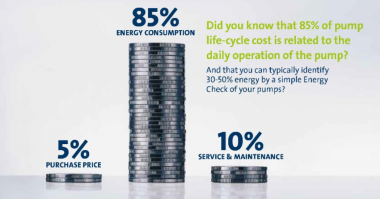The American Water Works Association (AWWA) announced the availability of a new document entitled “Improving the Evaluation of Household-Level Affordability in SDWA Rulemaking: New Approaches,” to help facilitate discussion of U.S. Environmental Protection Agency’s (EPA) analysis of household-level affordability when making regulatory decisions.
AWWA convened a panel of experts led by co-chairs John Graham and Cary Coglianese. Graham, a professor at the University of Indiana, was administrator of the Office of Information and Regulatory Affairs at Office of Management and Budget under President George W. Bush. Coglianese is a law and political science professor at the University of Pennsylvania, where he also serves as the director of the Penn Program on Regulation.
The expert panel concluded regulatory actions should simultaneously account for vulnerable people’s access to affordable water service and the need to protect their health. This conclusion is important because when cost-benefit analyses are conducted under the Safe Drinking Water Act (SDWA), it may be assumed all households are willing and able to pay for safer drinking water, even though households vary in their ability to pay.
The expert panel recommended EPA expand its analysis of household-level affordability when performing economic analyses supporting future primary regulatory development under SDWA. Among the suggested changes is to move away from using Median Household Income (MHI) as the sole metric in assessing the impacts of the regulatory structure on affordability and focus more on impacts to households in the lowest 20 percent of income (lowest quintile). Moreover, EPA should seek to use analysis of affordability impacts to inform SDWA policy development (including but certainly not limited to regulatory standard setting) so that it can enhance public health protections while ensuring affordability.
“This report offers a roadmap toward improved analysis of a growing water affordability crisis in the United States,” Coglianese said. “Meaningful universal access to safe, life-sustaining water is increasingly put at risk by infrastructure demands and other factors driving up the costs of basic water services. With better analysis of the scope and causes of these trends, policy decision-makers at the local, state and federal levels will be better able to take the actions needed to ensure everyone has access to a safe and affordable supply of water, no matter their level of income.”
“Most people will think we don’t need affordability analysis because EPA does cost-benefit analysis,” said Graham. “I want to emphasize that cost-benefit analysis, as currently practiced under SDWA, does not address affordability for low-income households. This report will help ensure low-income customers are considered in future rulemaking.”
“In bringing these experts together our goal was to spotlight the growing importance of addressing affordability as a component of sound water policy decisions, including regulatory rule making,” AWWA CEO David LaFrance said. “Ultimately, customers pay to maintain their water systems and services – drinking water, wastewater and stormwater. Decision makers need to consider all customers – particularly lower income customers – in their regulatory policy discussions.”
The document is available for free download on AWWA’s Affordability Resource page.
Established in 1881, the American Water Works Association is the largest nonprofit, scientific and educational association dedicated to managing and treating water, the world’s most important resource. With approximately 50,000 members, AWWA provides solutions to improve public health, protect the environment, strengthen the economy and enhance our quality of life.





Comments